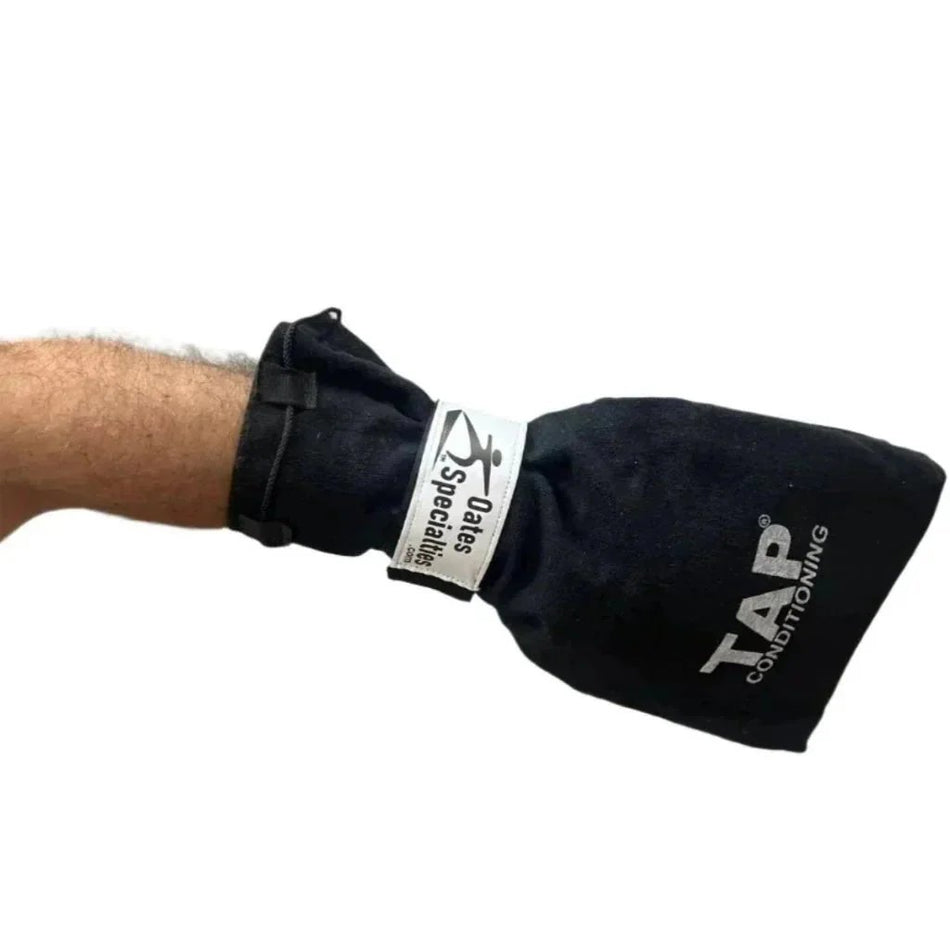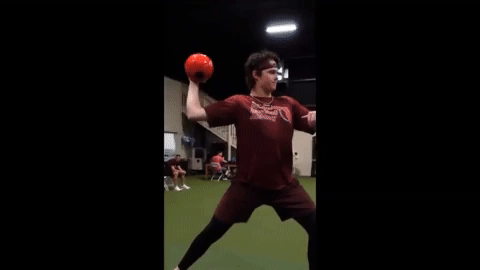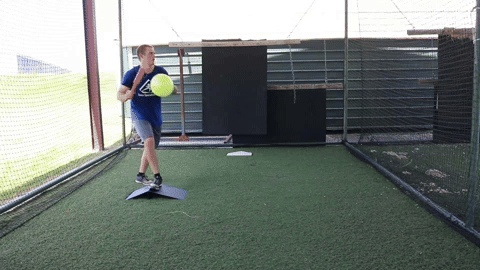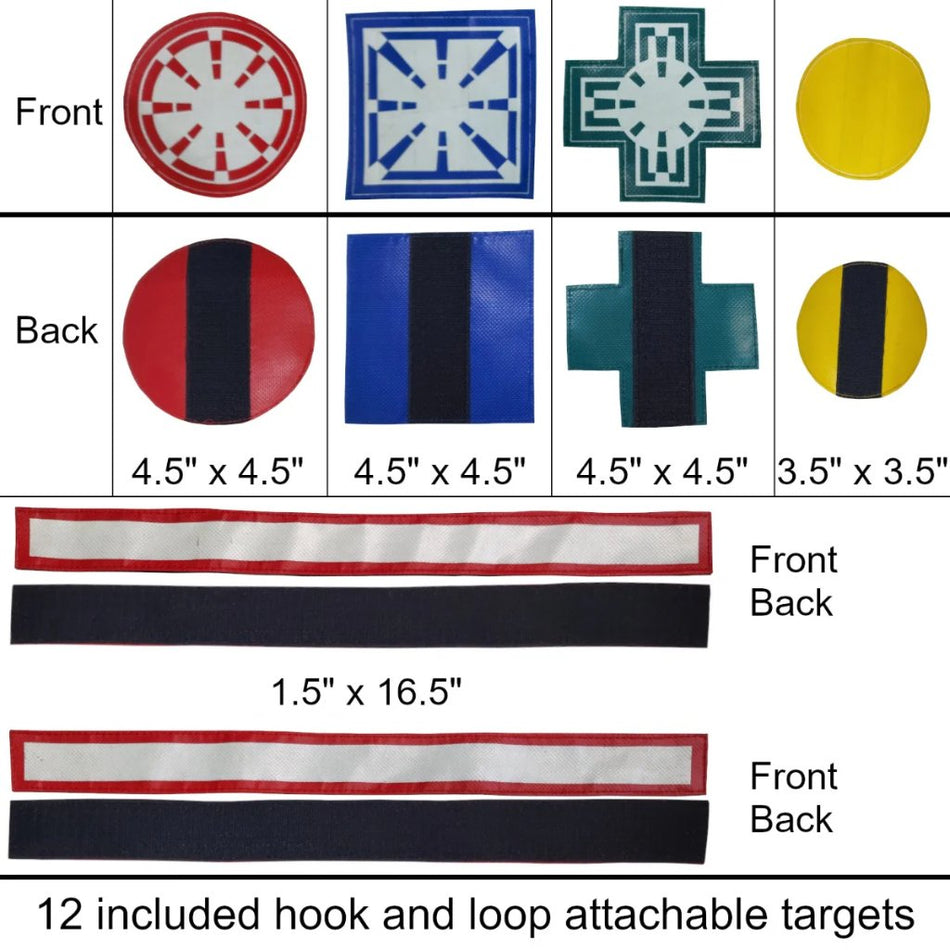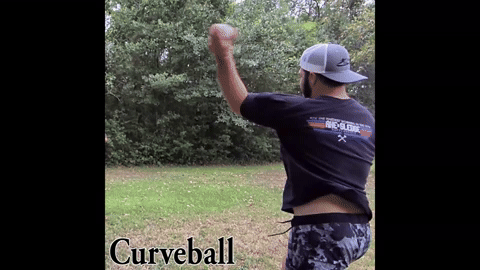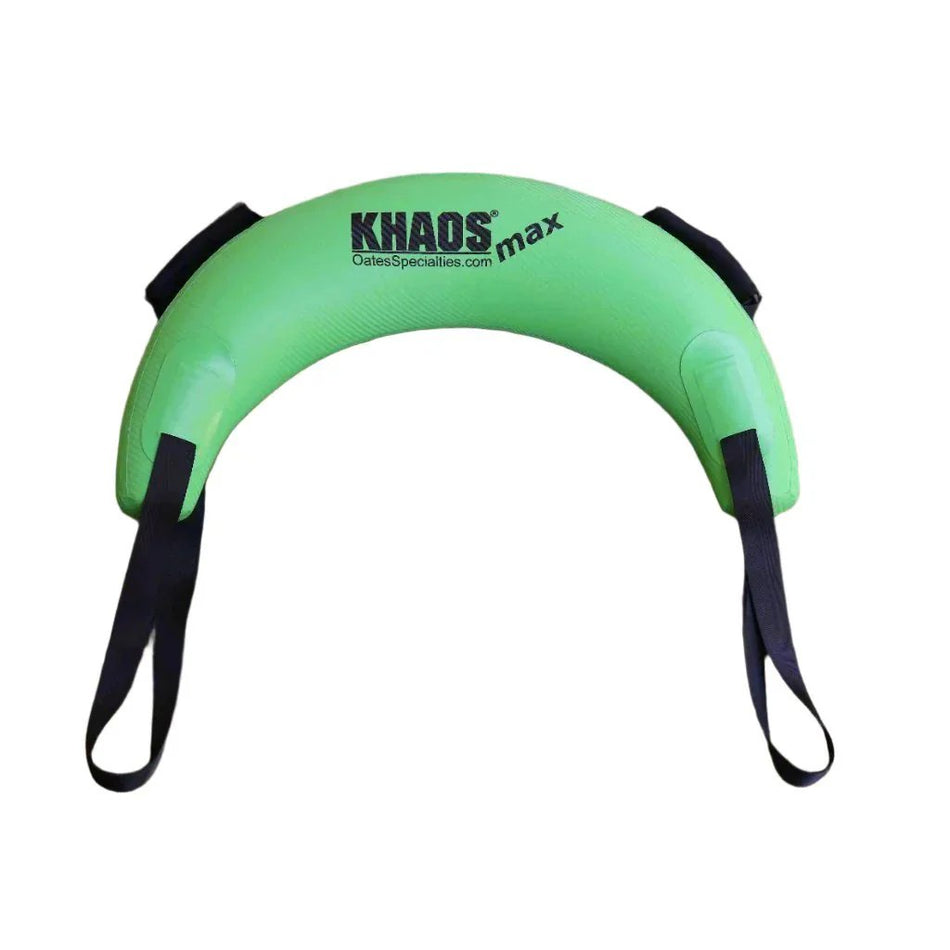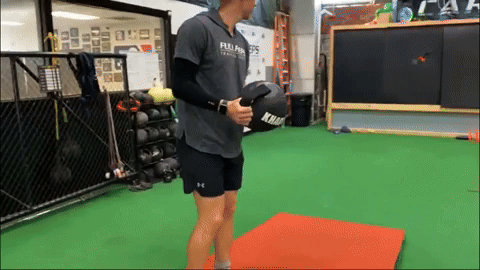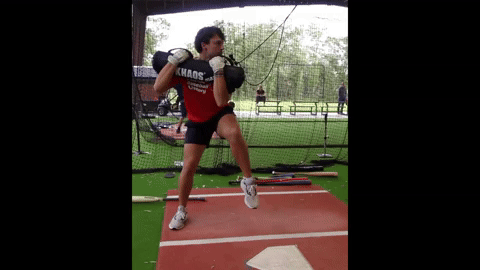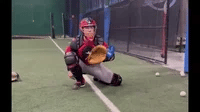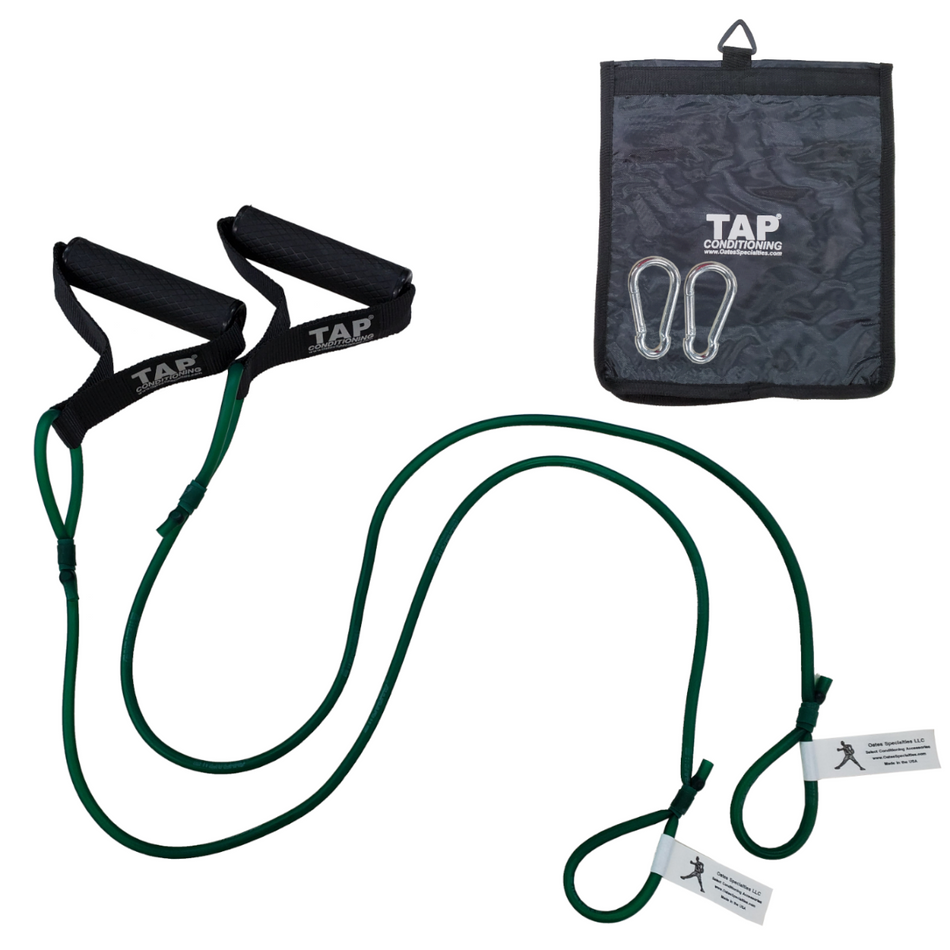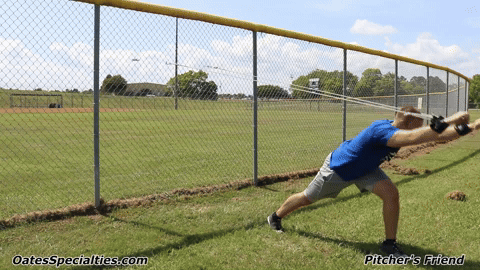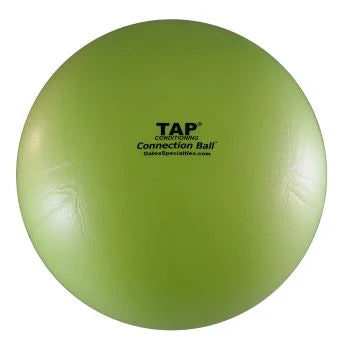In the first part of this series, I discussed the importance of understanding your athlete's needs and creating a training plan that addresses them. I also talked about how to gradually increase your training intensity and the importance of nutrition and hydration. If you haven't read Part 1, you can find it here: https://oatesspecialties.com/blogs/default-blog/developing-effective-training-programs-a-comprehensive-approach.
In this part, I'll explore the building blocks of a training program, focusing on weightlifting, a crucial aspect of athletic development. Next up let’s discuss “Functional Training”. I would prefer to use the term 'special strength and movement continuum' instead of 'functional training,' but since 'functional training' is more commonly used, I'll stick with that. I'll show you how you can seamlessly integrate this concept into a well-structured program.
Weight Training
While the allure of sculpting a "beach body" through weight training is undeniable, for athletes, the primary focus should be on developing functional strength that translates closely to improved athletic performance. Diet plays a vital role in body composition anyways, and strength training should prioritize goals like absolute strength development, improved ligament and tendon tensile strength, and enhanced force generation – all crucial factors in preventing injuries and maximizing performance.
It's important to move away from the misconception that weight training is a competition in maximal lifts (unless you're a powerlifter) or a race to gain the most muscle (unless you're a bodybuilder). The goal isn't necessarily to become the strongest possible, but rather to achieve optimal progressive strength while maintaining proper range of motion, fostering efficient sport-specific movement patterns, and developing the capacity to rapidly produce and absorb force.
Strength coaches can often fall into the trap of equating higher weight with better performance. While increasing a squat from 450lbs to 500lbs might seem beneficial, it could also place undue stress on the athlete's spine, hips, knees, and ankles. The focus should be on utilizing the acquired strength effectively to achieve superior results on the field. We, as coaches and athletes, need to shift our perspective away from a short-term focus on rapid strength gains, and instead look for consistent gradual increases. A well-designed program that prioritizes movement efficiency over pure strength can lead to far more sustainable improvements, as evidenced by Ron Wolforth's video (https://www.instagram.com/p/C9kmx2WOswA/). While his emphasis in this video leans more towards the athletes weight, the concept applies equally to strength training, where efficient movement is paramount. More MASS does not always equal more GAS.
Maximizing Stimulus, Not Just Load
The focus of a weight training program should not be solely on achieving maximal lifts ("MAX focus"). Instead, it should prioritize providing a variety of "stimulus" to the system. This concept aligns with the principles discussed in The Farm System Podcast by Joey Cunha and Randy Sullivan (Episode 198: https://twitter.com/thefarmsystem/status/1833970964041768997). They emphasize that progress comes from varied stimuli, not just increasing load. In the weight room, this translates to incorporating techniques like changing exercise selection, adjusting weight, and introducing new variations.
For example, with an athlete who can bench press 225lbs, progressing to 230lbs might not be the most effective approach. Introducing variations like dumbbell bench press, unilateral bench press, or neutral grip bench press would expose the athlete to different stimuli, challenging them without necessarily increasing the absolute load. This shift in perspective is crucial for understanding the desired outcomes of weight training for athletes.
Frequency: Balancing Recovery and Efficiency
The optimal frequency of weight training sessions (3 days/week vs. 4/week vs. 5/week) is a topic of debate. While personal preference exists, I typically recommend starting athletes on a 3-day/week program. This approach offers several benefits:
- Enhanced recovery time: More frequent workouts leave less time for adequate muscle recovery, hindering progress.
- Emphasis on movement efficiency: Fewer sessions allow for dedicated focus on proper technique and efficient movement patterns.
- Scheduling flexibility: Three workouts tend to be easier to manage throughout the week compared to 4-5 sessions. Athletes often miss workouts in higher-frequency programs, disrupting their progress.
Research by Greg Nuckols (2014) supports the efficacy of 3-day/week routines. A meta-analysis of 13 studies revealed that a frequency of 3 sessions per week led to the highest average weekly strength gains (2.61%) compared to 1 session/week (1.47%), 2 sessions/week (2.17%), or 4+ sessions/week (2.10%). While statistically significant differences only existed between 1 and 3 sessions per week, the overall trend suggests a sweet spot for maximizing progress with 3 sessions.
Reference:
Nuckols, G. (2014, March 31). Training Frequency for Muscle Growth: What the Data Say. Stronger By Science. Retrieved from https://www.strongerbyscience.com/training-frequency/
Rotating the “STIMULUS”
To optimize program effectiveness, consider a 3-week EXERCISE rotation that targets each muscle group with different movements while maintaining adequate form, mobility, and stability. For example, a typical week might include a bench press, dumbbell bench, and weighted push-ups. The following week could feature unilateral dumbbell bench, neutral grip bench press, and waterboy bench press. This rotation ensures comprehensive muscle development and avoids overuse injuries. Beyond strength, this approach incorporates stability, power, and full range of motion. For each workout, you can select 4 exercises. 1 exercise each for upper body pressing, upper body pulling, lower body pulling, and lower body pressing, and then come up with 6-9 variations of those exercises so that you can rotate them weekly to provide the different stimulus needed for continuous progression.
Note: These are just examples based on my experience with myself or an athlete I trained. The specific exercises and sets/reps should be tailored to your individual needs and goals.
Integrating Movement Throughout Your Strength Training
The term "functional training" often leads to confusion and creates the impression of a separate workout regime. In reality, functional training should be seamlessly woven into your weight training program. Strength development will naturally occur over time, but prioritizing functional movement patterns should be the cornerstone of these sessions.
Warm-up as Corrective and Conditioning Tool
Every effective program starts with a thorough warm-up. Its purpose extends beyond simply raising body temperature. Here, we can take a "joint-by-joint" approach to identify mobility and stability limitations. For a deeper dive into this concept, I recommend Gray Cook's and Mike Boyle’s work, (https://www.otpbooks.com/expanding-on-the-joint-by-joint-approach-by-gray-cook-part-1-of-3/). This paradigm shift in my understanding of warm-ups transformed them from mere pre-workout routines into opportunities for corrective interventions. By addressing movement limitations through a joint-by-joint approach, I recognized the potential to positively impact an athlete's long-term development beyond the immediate workout. It's important to note that while the warm-up provides a foundational platform, additional corrective exercises may be necessary to fully address underlying movement dysfunctions.
Unfortunately, many neglect warming up adequately before weight training. Remember, functional training is integrated into your weight room routine, and so is the warm-up. Contrary to popular belief, you don't need a lengthy 30-minute session. A few targeted exercises that address individual limitations will suffice.
Enhancing Functional Training with Equipment
Several prominent figures in the strength and conditioning world demonstrate the incorporation of functional training into programs. For example, Eric Cressey, a highly respected coach, discusses this integration in his work (https://ericcressey.com/show-and-go-for-baseball-training/). We can utilize tools like medicine balls (https://oatesspecialties.com/pages/search-results-page?q=medicine%20balls) and resistance bands (https://oatesspecialties.com/products/tap-sheathed-safety-tubing) to add variety and challenge.
Furthermore, consider venturing beyond traditional equipment and incorporating water-based tools like waterboys (https://oatesspecialties.com/products/khaosr-waterboys) and water balls (https://oatesspecialties.com/products/khaosr-water-balls) as seen in ChampionPT's work (https://www.instagram.com/p/DAJzP2cPzMx/). Water introduces an additional dynamic element, promoting body awareness and enhancing joint stability.
Putting it all Together: Sample Workout
The following sample workout demonstrates how functional training can be integrated into a traditional weightlifting routine. It's important to understand that this is just an example, and individual needs and limitations should guide specific exercises (refer back to the warm-up discussion).
Warm-up
- Ankle Walks 10yds walking forward and backward on toes, heels, outside of the feet, and inside of the feet
- Standing Hip Circles (Holding onto something bend your knees and try to move your leg in complete circles forwards and backwards) 10 forwards and 10 backwards
- Walks 10yds with opening and closing the hips (Walk in a straight line. Going forward take your knee straight out to the side and bring it directly in front as you walk forward. Going backwards start with the knee waist high in front and rotate it back to the side as you walk backwards)
- Bodyweight Squats x 10
- Squat Jumps x 10
- Bear Crawl 10yds forwards, backwards, side to side with a half cone marker https://oatesspecialties.com/products/tap%C2%AE-cones?variant=45065769648350 on the lower back and a tennis ball on top of the cone. (The ball on the cone forces the athlete to control and stabilize their core as they perform the bear crawl. If the ball falls, you know the athlete did not control their core very well)
- High Knees 10yd and back
- 45 degree jumps 10yds and back (Start on one leg, jump at a 45 degree angle to land on the other leg. The goal is to jump as far as possible while sticking the landing each time)
- 45 degree jumps with waterboy (https://oatesspecialties.com/products/khaosr-waterboys) added joint stability requirements and greater activation to prevent from falling over
- Exercise Bands shoulder routine 10 each (No moneys palm up, palm down, palm together and external rotations)
**The whole thing took about 10 minutes for the athlete after they learned the exercises.
The Workout
A.ShoulderShaker (Shoulder Rhythmic Stabilizations) 10 secs each arm straight out and 10 secs moving in different ranges of motion. 20 sec total each arm
** The following are supersets. One set is performed and then the next exercise is performed then repeated for total number of sets. Ex. Athlete completes B1 and immediately performs B2 then back to B1 to start the rotation again. Rest followed each supset rotation.
B1. Unilateral Dumbbell Bench Press- 4 sets of 6 reps
B2. Medicine Ball Chest Pass (Going for distance. How far can we throw it?) 3 reps
C1. Front Squat 4 sets of 5 reps
C2. Hyden Jumps with KHAOS Waterball (https://oatesspecialties.com/products/khaosr-water-balls) x 3 each leg could be done without the water ball, but greater emphasis on deceleration with the water ball
D1. Chest Supported Dumbbell Row 4 sets of 6 reps
D2. Medicine Ball (https://oatesspecialties.com/products/taptm-pummel-ball) Slams 5 reps
E1. Dumbbell RDL 3 sets of 6 reps
E2. Band (https://oatesspecialties.com/products/giant-flat-bands-bands-for-pullups-stretching-or-resisted-body-weight-exercises ) Resisted Broad Jumps 4 jumps
F. Medicine Ball (https://oatesspecialties.com/products/taptm-soft-medicine-ball) Step Behind Shot Put throws 6 throws each side
Post-workout nutrition is crucial for optimal recovery and performance. Immediately following the workout, it is important to consume a meal or snack rich in protein and rapidly digestible carbohydrates to replenish glycogen stores and support muscle repair. Examples of suitable options include rice, Gatorade, or fruits combined with protein shakes, meat, or dairy.
It’s important to emphasize that this sample workout is tailored to a specific athlete and may not be directly applicable to all individuals. Each athlete has unique needs and requires a customized approach. By understanding this principle, you can effectively design training programs that address specific goals and limitations.
Additional Considerations:
- The integration of traditional weight training exercises with functional movements enhances the overall effectiveness of the program.
- Incorporating explosive movements after main lifts helps utilize the activated muscle fibers and promotes enhanced movement efficiency.
This comprehensive overview aims to equip you with the knowledge and tools to design effective training programs for you or your athletes. While the depth of the topic may be extensive, the key principles and practical examples provided should empower you to make informed decisions and create personalized programs that foster athletic growth and development.
Part 3 will delve into the critical role of sport-specific training in a comprehensive athletic development program. It will explore how integrating skill-based practice with foundational strength and conditioning modalities can optimize performance. Additionally, expert insights will be shared regarding the effective structuring of skill-specific training sessions. Finally, the importance of monitoring and adjusting training loads based on daily, weekly, and overall training volume will be discussed.




